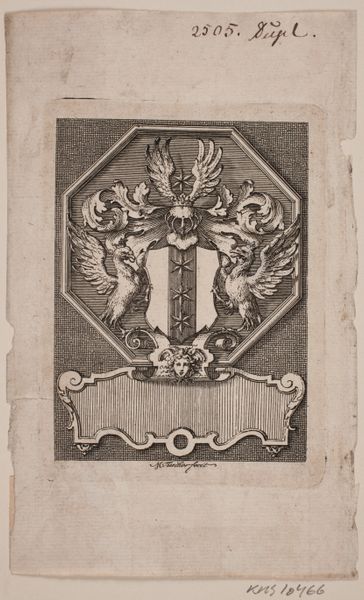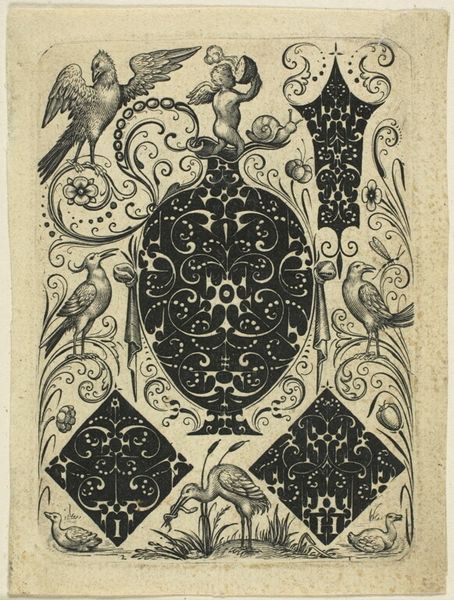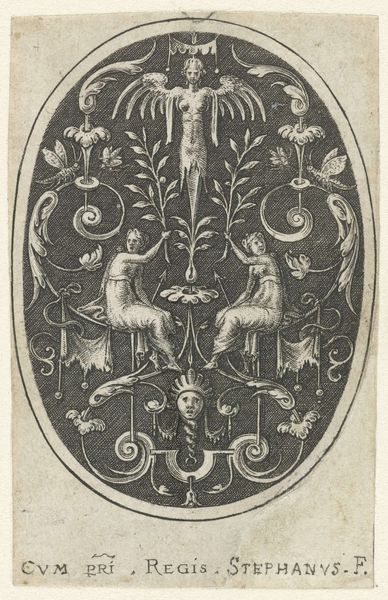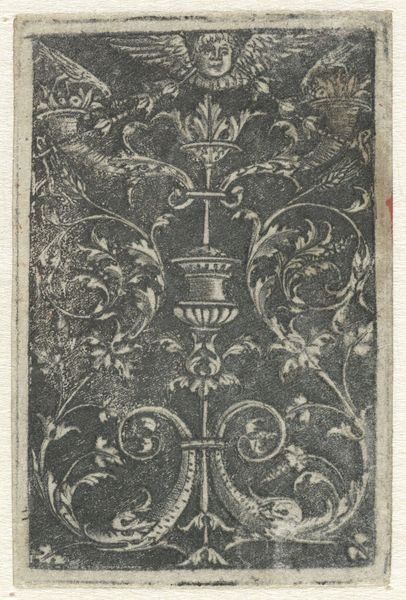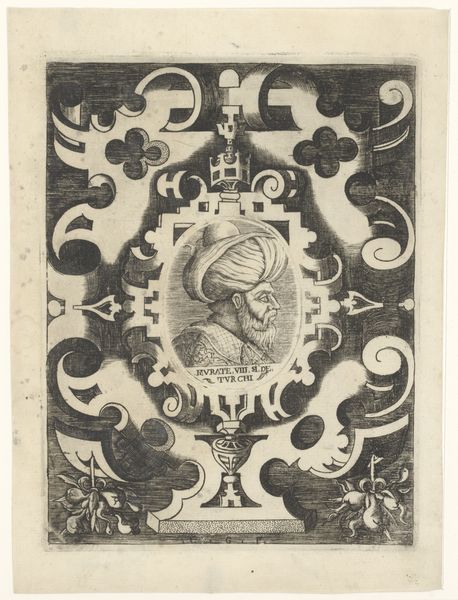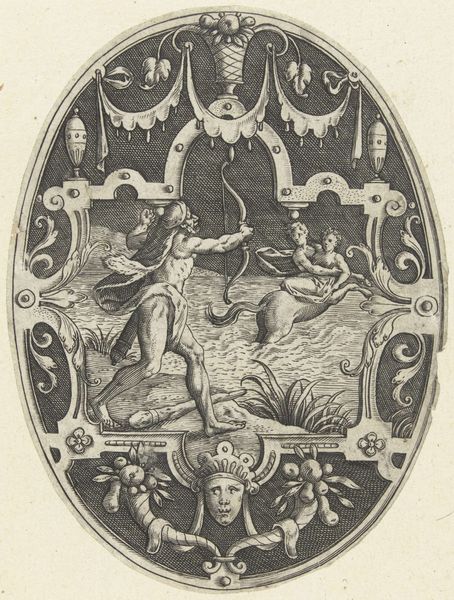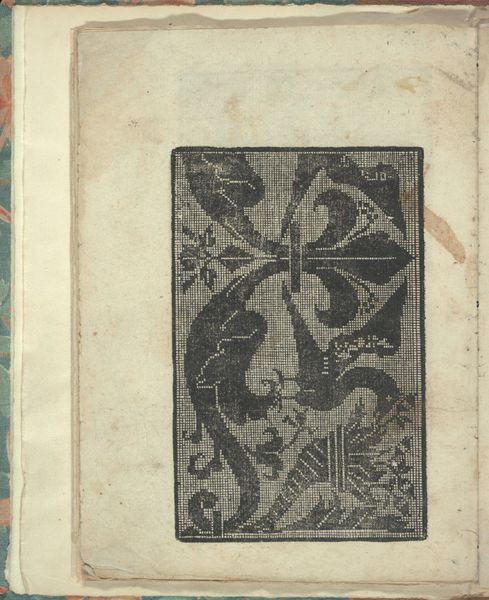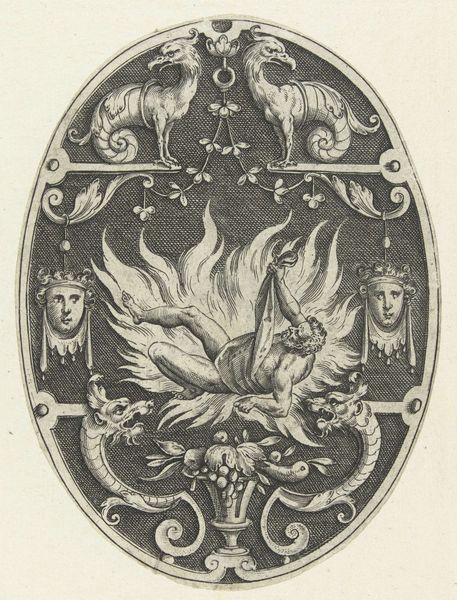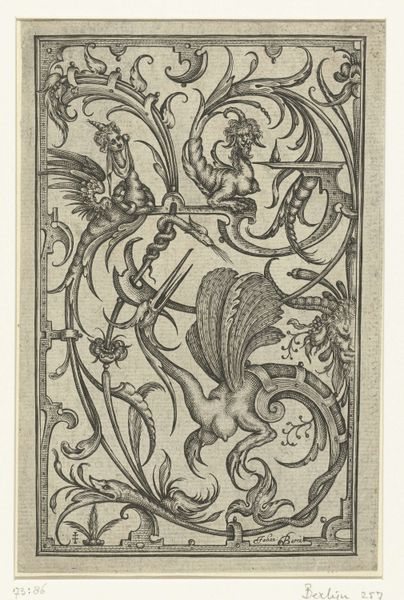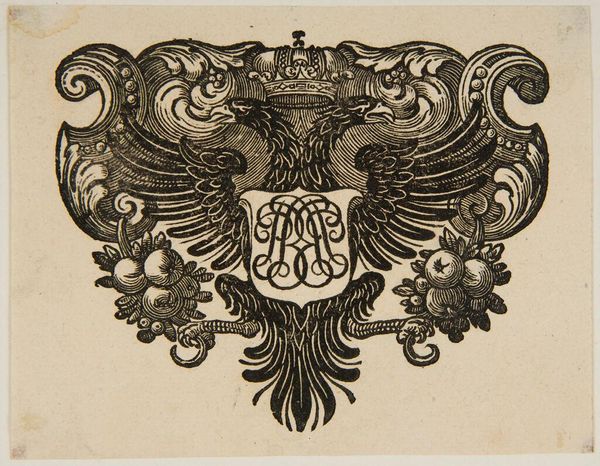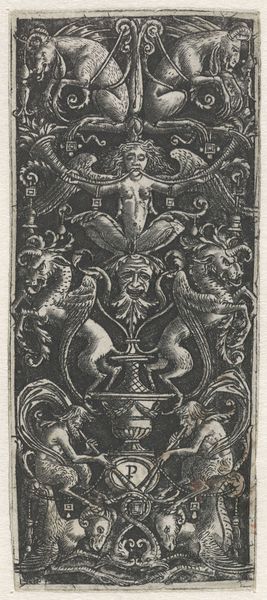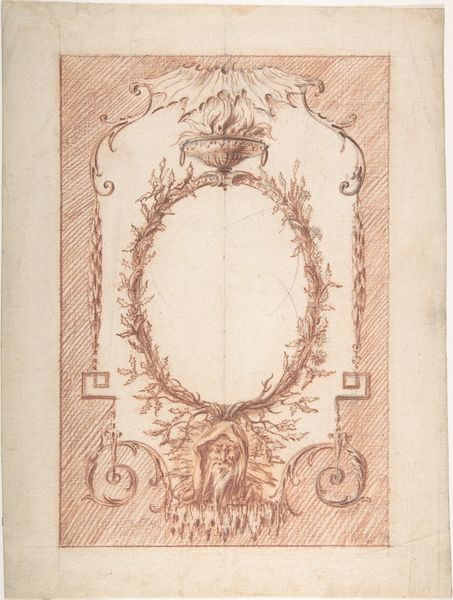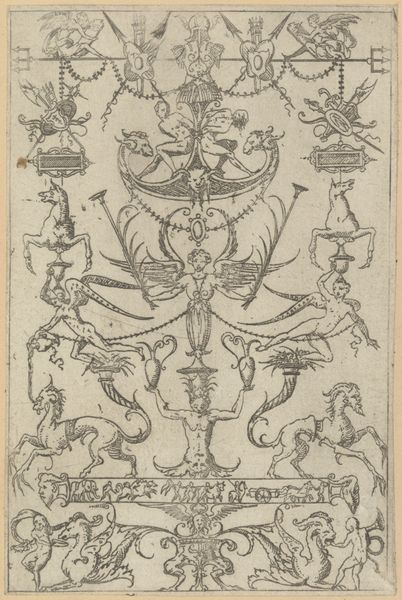
painting, oil-paint
#
portrait
#
medieval
#
painting
#
oil-paint
#
sculpture
#
painted
#
oil painting
#
history-painting
#
academic-art
Dimensions: overall (visible surface, greatest height): 43 x 30 cm (16 15/16 x 11 13/16 in.) framed: 49.6 x 37 cm (19 1/2 x 14 9/16 in.)
Copyright: National Gallery of Art: CC0 1.0
Curator: Here we have a portrait created by Bernhard Strigel in 1527, rendered in oil paint. The piece is titled “Margarethe Vöhlin.” Editor: Oh, it has a slightly worn quality that I really love. Like an old book cover. Makes me wonder about the stories this crest holds... there’s a shield and a helmet...I wonder, what kind of life and loves unfolded under that emblem? Curator: These elements—the helmet, the crest—point us towards the history and significance of heraldry, and what families sought to convey in terms of their legacy. The piece offers a window into the social structures of the 16th century. Coats of arms like this, rich in symbolism, communicated lineage, status, and affiliation within a tightly knit society. Editor: Right, it’s like their social media profile, but instead of carefully curated selfies, it's ancestral bragging rights, painted for posterity! But still, there’s a strange anonymity here; the repeated “EEE” is almost like an erasure, don't you think? Curator: I find that observation particularly astute. Consider how coats of arms operated in marking identities but simultaneously, in their standardization, perhaps obscured the individual woman. What does it mean to have your likeness and lineage reduced to symbol, however elaborate? Editor: Maybe she wasn't happy about it? I like to imagine Margarethe rolling her eyes at this thing, muttering about wasted portrait commissions. The feathers at the top—they’re almost comical, a bit excessive. Curator: And such extravagance certainly plays into the themes of gender, power, and representation—for elite women, what avenues of agency existed, and how might those have been constrained or complicated by patriarchy and expectations for their role in the family lineage? Editor: Right. Seeing it that way makes you question who had control in depicting her image for history... or rather, if she had a choice in this symbol speaking for her, silent as it may be. Curator: It all certainly reveals layers to unearth when you approach this sort of historical work, especially a painted family crest of its era. Editor: Yeah, this definitely invites you to peel back the layers and see what tales lie beneath. Like any great image really.
Comments
No comments
Be the first to comment and join the conversation on the ultimate creative platform.

